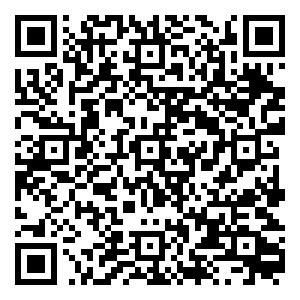Experimental Investigation on Damage Identification of Cable-Stayed Arch-Truss Structures Using Modal Parameters
-
摘要: 张弦桁架结构是是由上部刚性拱桁架与下部柔性拉索通过中部撑杆组合而成的一种自平衡体系,具有受力合理、承载能力高、造型轻盈、跨度大等优点,被广泛应用到大跨钢屋盖结构中。但张弦桁架结构规模大、服役期限长,所处环境状况复杂,受到的荷载作用具有随机性,发生损伤的潜在危险性较大。此类结构一旦出现损伤会对结构的正常使用产生影响,甚至可能引起连续倒塌,因此研究张弦桁架结构在运营期的损伤识别具有重要的现实意义。但张弦梁结构中存在拉索、撑杆和桁架等不同类型杆件,受力机理更加复杂,其损伤识别与常规桥梁式结构或多高层建筑结构存在明显差异,目前针对张弦桁架结构的损伤识别尤其试验研究很少。因此,针对张弦桁架结构基于模态参数的损伤识别方法开展试验研究。
通过对某火车站顶棚结构进行缩尺简化,设计制作了两榀张弦桁架试验模型。两榀试验模型结构尺寸相同,模型总长6 m,矢高0.4 m,垂度0.4 m,上部采用倒三角立体桁架,每两个节点之间由四角锥基本单元构成,结构中部均匀布置5根对称的圆钢管撑杆,下部布置直径8 mm的钢丝绳拉索,并施加2 kN预应力;试验模型一端为固定铰支座,另一端为滑动铰支座,并在结构两侧设置刚架作为受压桁架侧向支撑。两榀试验模型构件截面尺寸不同,模型1相对于模型2杆件截面尺寸较小;荷载施加情况不同,模型1未施加外荷载,模型2在模型上弦杆布置质量块模拟结构正常使用状态的荷载。试验采用不同截面尺寸杆件替换正常杆件的方法来模拟结构损伤,即通过降低截面刚度的方法来模拟杆件损伤,根据杆件截面积丧失程度定义损伤程度。试验设计了弦杆单损伤、多损伤、索撑损伤等不同程度以及不同位置的损伤工况,通过动力检测获取试验各工况前三阶模态参数:采用单点拾振、多点激励的方式进行试验,即将加速度传感器安装在桁架上弦杆件的4号节点处,然后用力锤依次对1~14号节点进行锤击,每个节点锤击激励1 min,通过动态信号采集仪采集加速度信号;根据不同工况替换相应损伤杆件,依次采集加速度信号;接着利用TSTMP模态分析软件处理加速信号,获取张弦桁架每个工况的频率与振型等模态数据,以用于之后的损伤识别分析。
张弦桁架结构相对复杂,杆件繁多,可能发生损伤的部位较多,单一损伤识别方法无法一次检测出结构各部分的健康状态。因此将张弦桁架结构分为上部刚性桁架与索撑体系两部分,针对各组成部分的特点,采用基于振动模态参数的组合识别方法对张弦桁架试验结果进行分析:上部刚性桁架对结构整体频率影响较小且杆件连续,运用曲率模态差和模态柔度差曲率对其进行损伤识别;下部索撑体系杆件相对独立且单元数量相对较少,通过选取正则化频率变化率建立索撑体系频率指纹库的方法对其进行损伤识别。
曲率模态差是从结构各阶模态振型入手,对结构的振型进行差分得到模态曲率,再通过计算结构损伤前后曲率模态的变化得到。模态柔度差曲率是从结构的柔度矩阵入手,由损伤前后结构的各阶振型和频率共同得到结构柔度矩阵差,再对其对角元素差分得到。上部刚性桁架进行损伤识别时,根据结构损伤前后的模态数据计算绘制曲率模态差和模态柔度差曲率曲线,曲线突变最大处判定为桁架杆件损伤位置。正则化频率变化率是从结构各阶频率入手,计算结构损伤前后的频率变化率并对其正则化得到。由于其仅是损伤位置的函数,与损伤程度无关,因此建立频率指纹库时仅需考虑每个构件的一种损伤工况,减小了样本量。索撑体系进行损伤识别时,首先建立索撑体系频率指纹库,即预先假定各种损伤工况并依据结构理论模型进行有限元分析,计算得到对应的正则化频率变化率,从而建立频率指纹库;再由实测得到的结构固有频率,计算某工况下的正则化频率变化率指标,与频率指纹库进行对比,两者最接近处判定为索撑体系损伤位置。
采用张弦桁架的组合损伤识别方法分析试验数据,结果表明:1)基于前三阶频率的正则化频率变化率指标可以有效识别索撑体系的损伤。但由于索撑单元均具有对称性,因此正则化频率变化率指标无法判断对称单元的损伤情况,需要进一步验证。2)曲率模态差法和模态柔度差曲率法均能够较好地识别上部刚性桁架结构的单损伤和多损伤,但其对不同位置杆件的损伤识别效果略有不同。由于下弦杆直接与撑杆相连,受撑杆影响较上弦杆大,因此曲率模态差法和模态柔度差曲率法对上弦杆的识别效果优于下弦杆。3)曲率模态差法和模态柔度差曲率法均可以通过曲线定性判断上部刚性桁架杆件的损伤程度,损伤程度越大,曲线突变程度也越大。另外,越高阶曲线突变程度差距越小,因此应利用低阶模态数据定性判断损伤程度。4)与曲率模态差法相比,模态柔度差曲率曲线在非损伤位置突变小,曲线更稳定,受非损伤位置的干扰较少,识别效果更好。基于越多阶模态数据获得的模态柔度差曲率,其曲线在损伤位置发生的突变越明显,且基于前三阶模态数据得到的模态柔度差曲率完全可以满足损伤识别的精度要求。另外,越高阶振型数据得到的曲率模态差曲线突变越大,但其受干扰也越大,一般运用前两阶曲率模态差曲线可以得到较好的损伤识别效果。Abstract: In this paper, the experimental research on the damage identification method based on modal parameters for the cable-stayed arch-truss was conducted. Two test models of 6 m-span cable-stayed arch-truss were designed and fabricated. The structural damage was simulated by replacing the normal members with struts of different cross sections. Different damage conditions such as damage of the arch-truss members and the damage of the cable-strut system were designed. The modal parameters of first three orders were obtained through dynamic test for each damage condition, and the test results were analyzed by the combined identification method which was based on the vibration modal parameters: the top arch-truss was diagnosed by curvature modal difference method and modal flexibility difference curvature method. The regularized frequency change rate method is used to diagnose the bottom cable-strut system. The damage identification test results show that the curvature modal difference method and the modal flexibility difference curvature method have better effect on the damage identification of single-damage and multiple-damage of the cable-stayed arch-truss. And the recognition effect of the upper chord is better than that of the lower chord. Compared with the curvature modal difference method, the mutation of non-damage position is smaller and interference items are less by using the modal flexibility difference curvature method, leading to a better recognition effect; the regularized frequency change rate index of the first three orders’ frequency can effectively identify whether the cable support system is damaged. However, damage positioning for symmetrical position needs further verification. -
Qi Y S, Liu S H. Research of mechanical influence of initial imperfections on beam string structure[J]. Applied Mechanics and Materials, 2012, 166-169:282-286. Das S, Saha P, Patro S K. Vibration-based damage detection techniques used for health monitoring of structures:a review[J]. Journal of Civil Structural Health Monitoring, 2016, 6(3):477-507. Dahak M, Touat N, Benseddiq N. On the classification of normalized natural frequencies for damage detection in cantilever beam[J]. Journal of Sound & Vibration, 2017, 402:70-84. Wu Y H, Zhou X Q. L1 Regularized model updating for structural damage detection[J]. International Journal of Structural Stability and Dynamics, 2018, 18(12).Doi: 10.1142/S0219455418501572. He W Y, Ren W X. Structural damage detection using a parked vehicle induced frequency variation[J]. Engineering Structures, 2018,170:34-41. Mekjavić I, Damjanović D. Damage assessment in bridges based on measured natural frequencies[J]. International Journal of Structural Stability and Dynamics, 2017, 17(2):656-660. Zhou X, Wang D, Duan M, et al. Numerical study on mode curvature for damage detection of a drilling riser using transfer matrix technique[J]. Applied Ocean Research, 2017, 63:65-75. Dawari V B, Vesmawala G R. Modal curvature and modal flexibility methods for honeycomb damage identification in reinforced concrete beams[J]. Procedia Engineering, 2013, 51:119-124. Sung S H, Jung H J, Jung H Y. Damage detection for beam-like structures using the normalized curvature of a uniform load surface[J]. Journal of Sound and Vibration, 2013, 332(6):1501-1519. Ciambella J, Vestroni F. The use of modal curvatures for damage localization in beam-type structures[J]. Journal of Sound and Vibration, 2015, 340:126-137. Cao M, Radzieński M, Xu W, et al. Identification of multiple damage in beams based on robust curvature mode shapes[J]. Mechanical Systems and Signal Processing, 2014, 46(2):468-480. Cao M S, Xu W, Ren W X, et al. A concept of complex-wavelet modal curvature for detecting multiple cracks in beams under noisy conditions[J]. Mechanical Systems and Signal Processing, 2016, 76-77:555-575. Cao M, Xu W, Ostachowicz W, et al. Damage identification for beams in noisy conditions based on Teager energy operator-wavelet transform modal curvature[J]. Journal of Sound and Vibration, 2014, 333(6):1543-1553. Janeliukstis R, Rucevskis S, Wesolowski M, et al. Experimental structural damage localization in beam structure using spatial continuous wavelet transform and mode shape curvature methods[J]. Measurement, 2017, 102:253-270. Feng D, Feng M Q. Output-only damage detection using vehicle-induced displacement response and mode shape curvature index[J]. Structural Control and Health Monitoring, 2016, 23(8):1088-1107. Sun Z, Nagayama T, Nishio M, et al. Investigation on a curvature-based damage detection method using displacement under moving vehicle[J]. Structural Control and Health Monitoring, 2017,25(1).Doi: 10.1002/stc.2044. He M, Yang T, Du Y. Nondestructive identification of composite beams damage based on the curvature mode difference[J]. Composite Structures, 2017,16:178-186. Yang Z B, Radzienski M, Kudela P, et al. Damage detection in beam-like composite structures via Chebyshev pseudo spectral modal curvature[J]. Composite Structures, 2017, 168:1-12. Frans R, Arfiadi Y, Parung H. Comparative study of mode shapes curvature and damage locating vector methods for damage detection of structures[J]. Procedia Engineering, 2017, 171:1263-1271. Tran V A, Quek S T, Duan W H. Sensor validation in damage locating vector method for structural health monitoring[J]. International Journal of Structural Stability and Dynamics, 2011, 11(1):149-180. Khoshnoudian F, Talaei S, Fallahian M. Structural damage detection using frf data, 2d-pca, artificial neural networks and imperialist competitive algorithm simultaneously[J]. International Journal of Structural Stability and Dynamics, 2017.Doi: 10.1142/S0219455417500730. -

 点击查看大图
点击查看大图
计量
- 文章访问数: 408
- HTML全文浏览量: 83
- PDF下载量: 18
- 被引次数: 0




 登录
登录 注册
注册


 下载:
下载:

